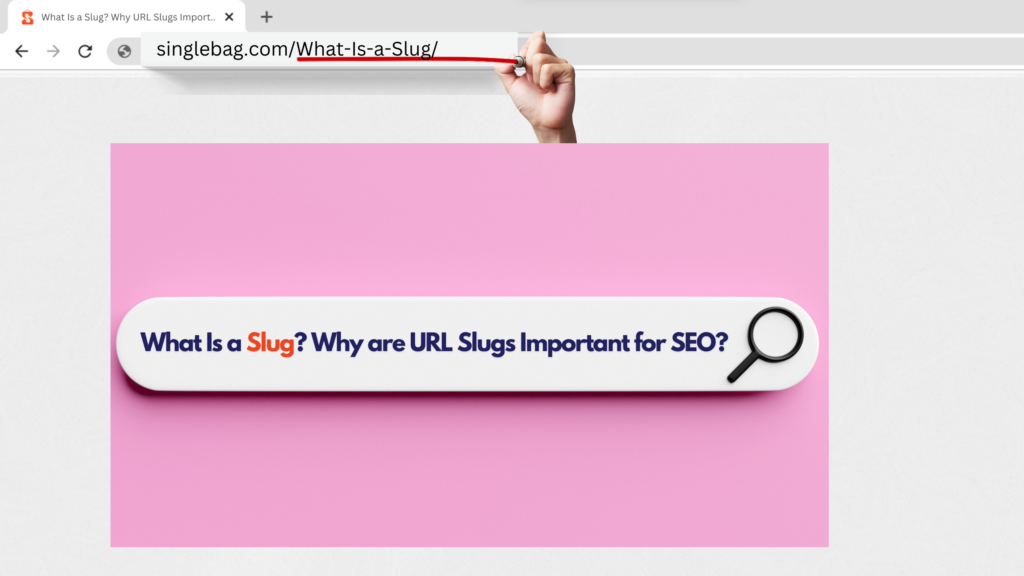
Understanding URL Slugs: Importance for SEO and Best Practices

In the world of search engine optimization (SEO), every element of a website plays a crucial role in determining its visibility and ranking. One such important element is the URL slug. URL slugs, also known as permalinks or SEO-friendly URLs, are the user-friendly and SEO-friendly segments of a URL that identify specific pages or posts on a website. In this comprehensive guide, we will explore the concept of URL slugs, their significance for SEO, and the best practices to optimize them for enhanced search engine performance.
What is a URL Slug?
A URL slug is part of a URL that comes after the domain name and provides valuable insights into the content of the page. It is typically a concise and descriptive text segment that aims to improve readability, relevancy, and search engine visibility. Unlike complex and cryptic URLs filled with numbers and symbols, URL slugs are designed to be human-readable and provide a clear idea of what the page is about.
Importance of URL Slugs for SEO
- Keyword Relevance and Ranking
URL slugs that include relevant keywords help search engines understand the content and context of a page. By incorporating targeted keywords into the slug, the page becomes more likely to rank higher in search engine results when users search for those specific keywords. For example, a blog post about “best hiking trails” could have a URL slug like “website.com/best-hiking-trails,” which clearly indicates the content and improves the page’s visibility for relevant searches.
- User Experience and Click-Through Rates
URL slugs play a significant role in enhancing the user experience by providing a clear idea of the page’s content. When users see a URL with a readable and meaningful slug, they are more likely to click on it, resulting in higher click-through rates. A descriptive URL slug helps users understand what they can expect from the page even before clicking the link, leading to a more satisfying browsing experience.
- Site Structure and Navigation
Consistent and organized URL slugs contribute to a logical site structure, making it easier for search engines to crawl and index the website. When URLs follow a clear hierarchy and reflect the site’s structure, search engines can understand the relationships between different pages and their importance within the website. This enhances the overall SEO performance of the site.
- Link Sharing and Social Media Visibility
URL slugs that accurately reflect the page’s content make shared links more credible and trustworthy. When sharing a link on social media platforms or other websites, the URL slug helps users and search engines quickly grasp the topic and context of the shared link. This increases its visibility and click-through rates, as users are more likely to engage with links that have meaningful and relevant slugs.
URL Slug Best Practices
To optimize URL slugs for SEO and maximize their effectiveness, it is essential to follow these best practices:
- Incorporate Targeted Keywords
Include relevant keywords in the URL slug that accurately represent the content of the page. By doing so, search engines can understand the page’s topic and context more easily. It is advisable to place primary keywords closer to the beginning of the slug for maximum impact.
- Use Hyphens for Word Separation
When separating words in the slug, it is best to use hyphens or dashes. Hyphens are preferred because they improve readability and help search engines recognize separate words within the slug. For example, “website.com/best-hiking-trails” is more readable than “website.com/besthikingtrails” or “website.com/best_hiking_trails.”
- Keep Slugs Concise and Focused
Long and convoluted URL slugs can be challenging to read and remember. Aim for concise slugs that capture the essence of the page’s content. Remove any unnecessary words or information that doesn’t contribute to the slug’s relevance. A concise slug, such as “website.com/hiking-tips,” is more effective than a lengthy one like “website.com/tips-for-hiking-in-the-mountains-during-summer.”
- Exclude Stop Words and Irrelevant Information
Stop words, such as “the,” “and,” or “of,” don’t add much value to the slug and can make it unnecessarily long. Exclude such words from the slug to keep it concise and focused on the relevant keywords. For example, instead of “website.com/best-hiking-trails-in-the-world,” use “website.com/best-hiking-trails-world.”
- Maintain Consistency
Consistency is key when it comes to URL slugs. Ensure a consistent slug structure and format across your website. By maintaining a uniform slug structure, you improve navigation and user experience, as visitors will become familiar with the website’s URL patterns. Additionally, avoid frequent changes to slugs, as they can lead to broken links and negatively impact SEO. If changes are necessary, use proper redirection techniques to maintain the website’s integrity.
Singlebag
Singlebag is a user-friendly E-Commerce Platform that simplifies the process of setting up your online store, requiring just 5 minutes to get started. Its user-friendly interface provides a wide array of robust marketing and sales tools suitable for businesses at any stage, whether they’re new or well-established. This makes it an ideal option for individuals looking to enhance their market presence and sell products on a global scale.

Conclusion
URL slugs are an integral part of SEO optimization, contributing to improved website visibility and enhanced user experience. By following best practices such as incorporating targeted keywords, using hyphens for word separation, and keeping slugs concise, you can maximize your website’s SEO potential and enhance its overall performance in search engine rankings. Remember, a well-crafted URL slug is not only beneficial for search engines but also for the users who interact with your website, ultimately leading to higher click-through rates, better user engagement, and improved conversions.






Responses